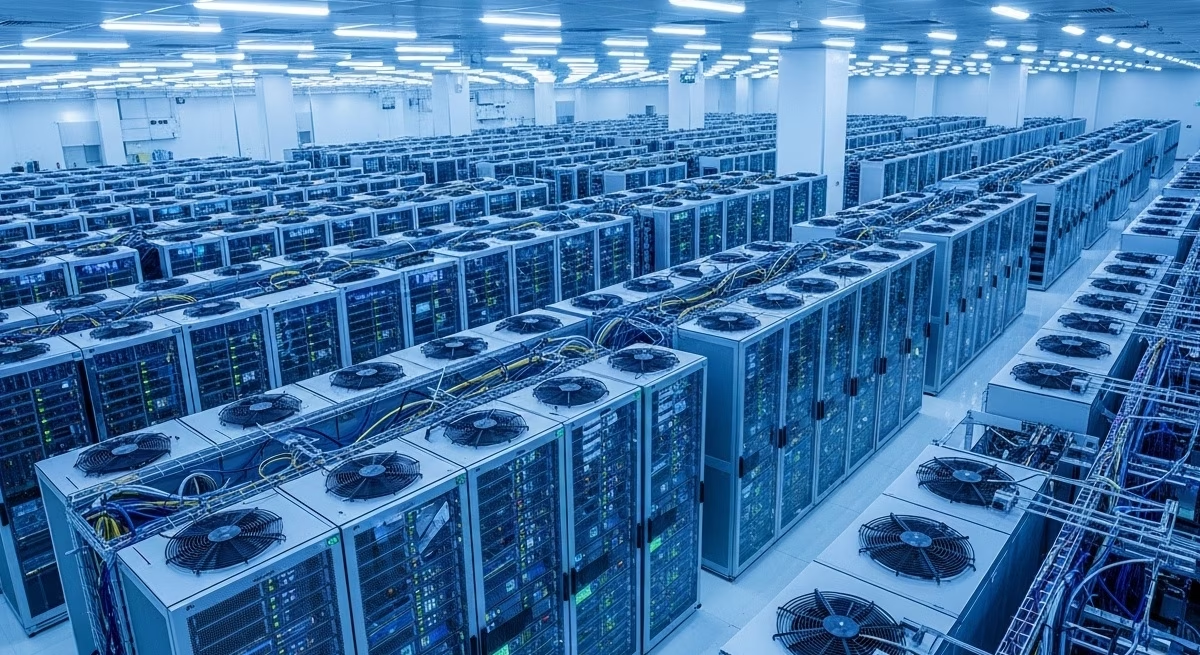
In the evolving landscape of high-performance computing, two giants loom large: massive AI data centers and traditional supercomputers. Though they share a hunger for compute and energy, their designs, purposes, and implications reflect distinct visions of what computational power means for the future of science, business, and society.
🧠 AI Data Centers: The Engine of Industrial-Scale Intelligence
AI data centers are sprawling facilities designed to train and serve artificial intelligence models. Giants like Google, Microsoft, Amazon (AWS), and CoreWeave are attracting staggering sums to build these computational powerhouses:
-
Google plans to spend roughly $75 billion on AI data centers in 2025, a 42% increase year-over-year.
-
Microsoft earmarked $80 billion for AI–optimized infrastructure.
-
AWS is outpacing them all, committing over $100 billion in cloud and AI facilities .
-
CoreWeave, a GPU-focused specialist, now operates 32 data centers globally with 250,000 GPUs, including a massive $1.6 billion facility built for Nvidia.
These centers deploy thousands of GPUs or AI-specific chips like Nvidia H100/GB200, AWS Trainium, Google TPUs, and Meta’s MTIA. They’re designed for flexibility—serving multiple users, scaling thousands of workloads simultaneously, and updated modularly via prefab racks and liquid cooling systems to manage ever-increasing density .
Despite staggering power demands—multi-megawatt racks and entire campuses consuming gigawatts—their ROI is justified by revealing advanced AI capabilities: natural language, vision, recommendation engines, autonomous systems, and more. These data centers act like modern factories of intelligence, spinning AI at planetary scale. And because they’re multi-tenant and cloud-connected, their reach touches all sectors, from healthcare to finance.
🛡️ Supercomputers: The Pinnacle of Scientific Computation
Supercomputers are purpose-built beasts optimized for simulation, modeling, and complex scientific calculations. The current poster child is El Capitan, deployed in November 2024 at Lawrence Livermore National Lab:
-
It ranks as the world’s fastest supercomputer, reaching 1.74 exaFLOPS (peak: 2.75 exaFLOPS).
-
Comprised of 43,808 AMD Genoa CPUs and 43,808 AMD MI300A GPUs, it draws 30 MW of power—enough to power ~30,000 homes.
-
Built at a cost of around $600 million, El Capitan supports critical missions like nuclear stockpile stewardship.
Government labs like Oak Ridge (Frontier), Argonne (Aurora), and European projects like LUMI are building equally formidable systems. These machines are highly specialized, with optimized networks and energy-efficient hardware tailored to scientific throughput, not flexibility.
Often deployed for weather modeling, nuclear simulations, fluid dynamics, and climate science, supercomputers are run by single user communities and funded via grants or national budgets. They’re fantastic at structured workflows, yet opaque and inaccessible compared to cloud AI platforms.
🔭 Head-to-Head: Where They Differ and Converge
| Feature | AI Data Centers | Supercomputers |
|---|---|---|
| Architecture | Commodity servers/gpu racks, modular, multi-tenant, liquid cooling | Tightly integrated nodes, custom interconnects (e.g., Cray Shasta), liquid cooling |
| Hardware | GPUs, TPUs, Trainium, MTIA | GPU-CPU APU combos (e.g., AMD MI300A) |
| Performance metric | High TFLOPS/PFLOPS, optimized for mixed‐precision AI | Measured in double-precision FLOPS, exascale-level |
| Scale & ownership | Millions of devices, privately owned, multi-tenant | Hundreds of thousands of nodes, government or consortium-owned |
| Energy & cost | 1 GPU = 1 human daily energy; runs 5k GPUs → city-level consumption; CapEx in hundreds of millions | Tens of MW per system, ~$600M for top systems |
| Primary use | AI training/inference, multitask AI services | Scientific simulation, national projects |
Yet they’re converging:
-
AI-optimized supercomputers
Governments recognize AI’s importance. Future supercomputers include AI in design—El Capitan and Aurora blend AI and HPC workloads. -
Cloud-hosted HPC
AI data centers now support weather and scientific simulations too. Services like AWS’s Ultracluster, Trainium, Google’s TPU pods support HPC workloads. -
Energy & cooling innovation
Both rely on liquid cooling and grid load-shifting. AI centers use modular prefabs; supercomputers use high-bandwidth interconnects and dense racks.
🌍 Power, Impact, and the Future Landscape
Energy is the limiting reagent. Training frontier AI models—thousands of GPUs running for ~100 days—consumes energy equivalent to powering 500,000 U.S. citizens for a day . El Capitan consumes what 30,000 homes would; future systems may require gigawatts (e.g., EU InvestAI’s “AI factories” plan) .
Global dominance tilts to the U.S., which holds ~75% of global AI supercomputer capacity; China trails at 15% . Europe is closing the gap with €200 billion InvestAI and “AI Factories” across EU countries.
Commercialization is shifting the center of gravity. Private companies now own over 80% of AI supercomputing power, a reversal from 2019 when governments led .
🏁 The Verdict: Different Tools, Shared Frontier
AI data centers and supercomputers occupy opposite ends of the same spectrum:
-
AI data centers drive commercial and societal innovation—AI-as-a-service—enabling chatbots, autonomous cars, personalized medicine, and more.
-
Supercomputers push the boundaries of science and national interest—from nuclear readiness to climate and disease modeling.
As they integrate AI workloads, cooperation blurs their boundaries. AI centers borrow simulation performance; supercomputers adopt AI-friendly architectures. Ultimately, the future belongs to the hybrid—systems that can both train trillion-parameter models and simulate nuclear reactions, running seamlessly across clouds and labs.



